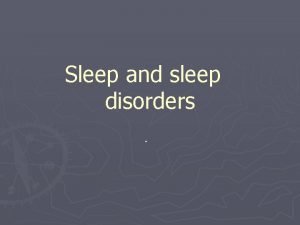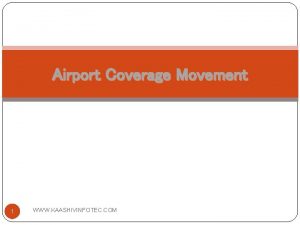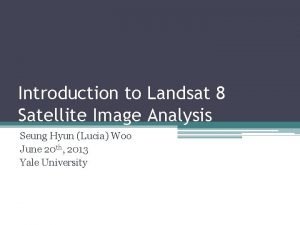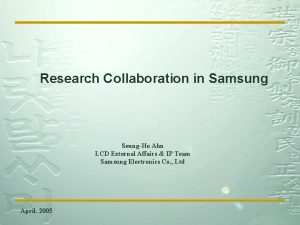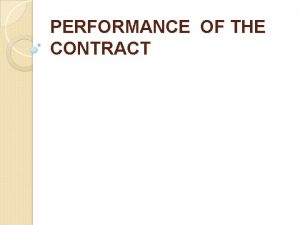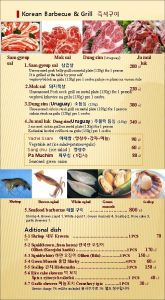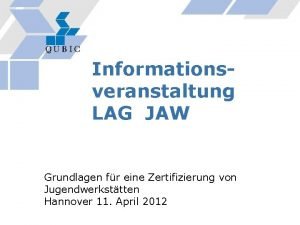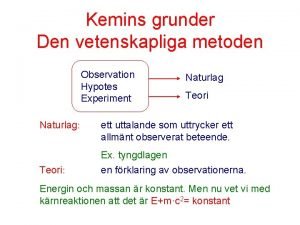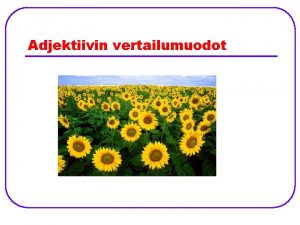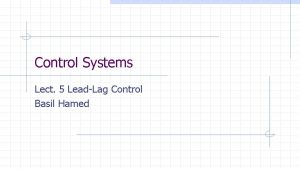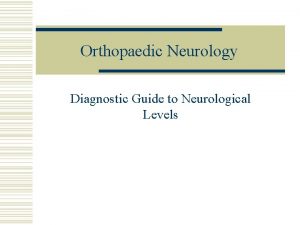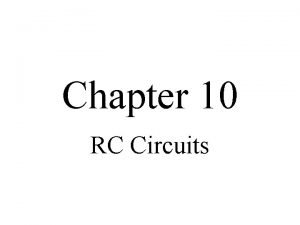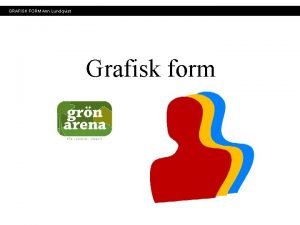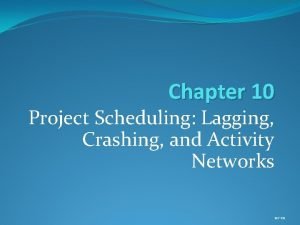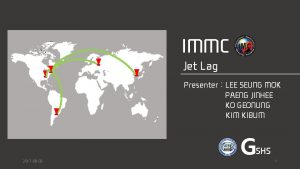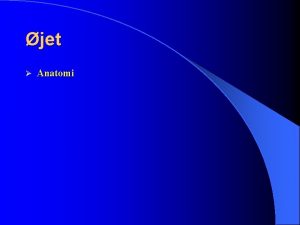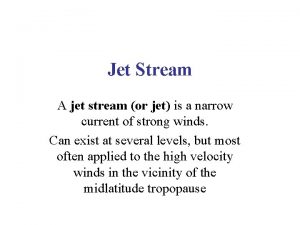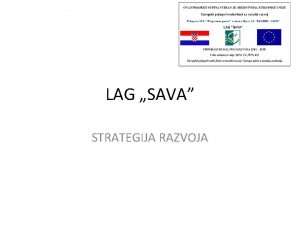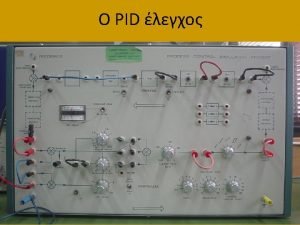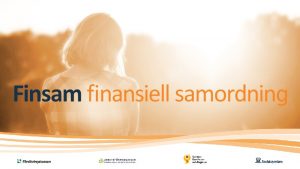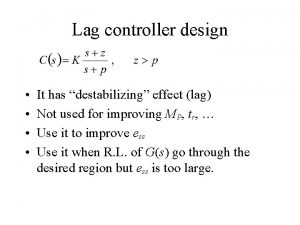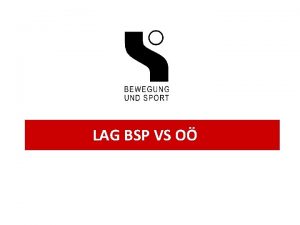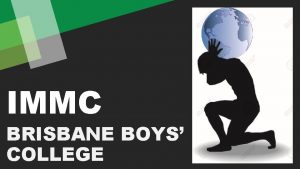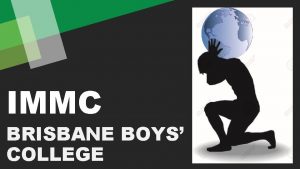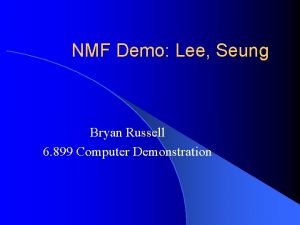IMMC Jet Lag Presenter LEE SEUNG MOK PAENG



































- Slides: 35

IMMC Jet Lag Presenter : LEE SEUNG MOK PAENG JINHEE KO GEONUNG KIM KIBUM G SHS 2017 -08 -03 G SHS 1

IMMC Introduction Jet Lag Introduction Assumption and Justification Flight time Estimation Relationship between Fatigue and Efficiency Change of Body Cycle after the Flight Maximizing the Productivity of the Meeting Part. I : Define productive meeting G SHS Work Efficiency • Productivity of meeting Sleep Time • Participant’s productivity Part. II : Find best location Scenario Conclusion Fatigue • Using programming (C++) Body Cycle ?

IMMC Assumptions Jet Lag Introduction Assumption and Justification 1. Same Schedule for all Participants Flight time Estimation Relationship between Fatigue and Efficiency Change of Body Cycle after the Flight Maximizing the Productivity of the Meeting 2. 72 hours(3 d) for perfect Adaptation 3. Plane through the Great Circle 4. All Participants arrive Simultaneously Scenario Conclusion G SHS 5. Location only affects Time Difference Environments are not considered

IMMC Variables Jet Lag Introduction Assumption and Justification Flight time Estimation Relationship between Fatigue and Efficiency Change of Body Cycle after the Flight Maximizing the Productivity of the Meeting Time variable Fatigue (0 to 1) Efficiency (0 to 1) Body cycle Home place Meeting place Scenario Conclusion G SHS Critical efficiency (criterion for “productive”)

IMMC Flight Time Estimation Jet Lag Introduction Assumption and Justification Flight time Estimation Relationship between Fatigue and Efficiency Change of Body Cycle after the Flight From To Time difference : Maximizing the Productivity of the Meeting Scenario Conclusion G SHS Distance :

IMMC Flight Time Estimation Jet Lag Introduction Assumption and Justification Flight time Estimation Relationship between Fatigue and Efficiency Change of Body Cycle after the Flight Maximizing the Productivity of the Meeting Scenario Conclusion G SHS Justification (latitude/longitude) city 1 city 2 Duration Actual Duration Case 1 Incheon Dallas (37. 47/126. 45) (32. 85/-96. 85) 13. 47 hr 13. 53 hr Sofia Tokyo (46. 70/23. 41) (35. 67/139. 75) 10. 87 hr 11. 35 hr Case 2 Errors in Case 1 1. 18% Errors in Case 2 4. 23% s s a lid a v A n o i t ump

IMMC Relationship between Fatigue and Efficiency Jet Lag Introduction Assumption and Justification Flight time Estimation Productivity High Fatigue Relationship between Fatigue and Efficiency Change of Body Cycle after the Flight Maximizing the Productivity of the Meeting Low Productivity Low Fatigue Scenario Conclusion G SHS High Productivity I’m tired…. . zzz I don’t want to work.

IMMC Fatigue Jet Lag Introduction Factor Assumption and Justification Flight time Estimation Relationship between Fatigue and Efficiency Change of Body Cycle after the Flight Maximizing the Productivity of the Meeting E R(t) B(t) Scenario Conclusion G SHS Efficiency Sleep Time Body Cycle

IMMC Relationship between Fatigue and Efficiency Jet Lag Introduction Assumption and Justification Efficiency 1 Flight time Estimation Relationship between Fatigue and Efficiency Change of Body Cycle after the Flight Maximizing the Productivity of the Meeting Scenario Conclusion G SHS 0, 5 0 0 0, 2 0, 4 0, 6 0, 8 1 Fatigue

IMMC Fatigue - efficiency Jet Lag Introduction Assumption and Justification Flight time Estimation Relationship between Fatigue and Efficiency Change of Body Cycle after the Flight Maximizing the Productivity of the Meeting Scenario Conclusion G SHS F E

IMMC Fatigue – sleep time Jet Lag Introduction Assumption and Justification Sleep at 24: 00, Wake at 8: 00 Flight time Estimation Relationship between Fatigue and Efficiency Change of Body Cycle after the Flight Maximizing the Productivity of the Meeting Scenario Conclusion G SHS While sleeping, Fatigue is decreasing

IMMC Fatigue – body cycle Jet Lag Introduction Assumption and Justification Flight time Estimation Insolation Body cycle Relationship between Fatigue and Efficiency Change of Body Cycle after the Flight Maximizing the Productivity of the Meeting Scenario Conclusion G SHS 1 -1 0: 00 12: 00 24: 00

IMMC Fatigue – body cycle Jet Lag Introduction Assumption and Justification Body cycle not directly affect fatigue Flight time Estimation Relationship between Fatigue and Efficiency Change of Body Cycle after the Flight Maximizing the Productivity of the Meeting Scenario Conclusion G SHS During the day During the night Few fatigue load A lot of fatigue load -1 0 1

IMMC Fatigue – body cycle Jet Lag Introduction Assumption and Justification Body cycle not directly affect fatigue Flight time Estimation Relationship between Fatigue and Efficiency Change of Body Cycle after the Flight Maximizing the Productivity of the Meeting Scenario Conclusion G SHS During the day During the night Few fatigue relieve A lot of fatigue relieve -1 0 1

IMMC Relationship between Fatigue and Efficiency Jet Lag Introduction Assumption and Justification Variable Flight time Estimation Fatigue Relationship between Fatigue and Efficiency Body Cycle Change of Body Cycle after the Flight Maximizing the Productivity of the Meeting Scenario Conclusion G SHS Efficiency Equation

IMMC Relationship between Fatigue and Efficiency Jet Lag Introduction Assumption and Justification Coefficient values Borb, A. A. , & Achermann, P. (1999). Sleep homeostasis and models of sleep regulation. Journal of biological rhythms, 14(6), 559 -570. Flight time Estimation Relationship between Fatigue and Efficiency Change of Body Cycle after the Flight Maximizing the Productivity of the Meeting Scenario Conclusion G SHS 0. 283 0. 236 1 0. 00835 0. 0009167 0. 0177 0. 083 Borb, A. A. , & Achermann, P. (1999). Sleep homeostasis and models of sleep regulation. Journal of biological rhythms, 1 0. 5563

IMMC Relationship between Fatigue and Efficiency Jet Lag Introduction Assumption and Justification Flight time Estimation Relationship between Fatigue and Efficiency Change of Body Cycle after the Flight Maximizing the Productivity of the Meeting Scenario Conclusion G SHS Coefficient values 0, 8 0, 7 0, 6 0, 5 0 24 48 72 96 120 144 168 192 216 Borb, A. A. , & Achermann, P. (1999). Sleep homeostasis and models of sleep regulation. Journal of biological rhythms, 14(6), 559 -570. Find tuples of the coefficients with the smallest RMS average of the difference between “Sleep Homeostasis and Models of Sleep Regulation” 240

IMMC Relationship between Fatigue and Efficiency Jet Lag Introduction Assumption and Justification Coefficient values Our model value Theoretical value 0, 8 Flight time Estimation Relationship between Fatigue and Efficiency 0, 7 Change of Body Cycle after the Flight 0, 6 Maximizing the Productivity of the Meeting 0, 5 1200 1224 1248 1272 Comparison when they converge 1296 1320 1344 1368 1392 1416 Scenario Conclusion G SHS 0. 0003 0. 00004 0. 0003 Results of most appropriate coefficients 0. 00005 3. 0 0. 60 1440

IMMC Relationship between Fatigue and Efficiency Jet Lag Introduction Assumption and Justification Variable Flight time Estimation Fatigue Relationship between Fatigue and Efficiency Body Cycle Change of Body Cycle after the Flight Maximizing the Productivity of the Meeting Scenario Conclusion G SHS Efficiency Equation

IMMC Change of Body Cycle after the Flight Jet Lag Introduction Assumption and Justification Flight time Estimation Relationship between Fatigue and Efficiency Change of Body Cycle after the Flight Maximizing the Productivity of the Meeting Scenario Conclusion G SHS Home Adaption Meeting

IMMC Change of Body Cycle after the Flight Jet Lag Introduction Assumption and Justification Flight time Estimation Fatigue value before, while, and after the flight. 0, 8 Relationship between Fatigue and Efficiency Change of Body Cycle after the Flight Maximizing the Productivity of the Meeting Scenario Conclusion G SHS 0, 7 0, 6 Home place 0, 5 plane 8: 00 Meeting place

IMMC Definition of productive meeting Jet Lag Introduction Assumption and Justification Flight time Estimation Worst efficient Non-productive 0, 7 Critical value L Relationship between Fatigue and Efficiency Change of Body Cycle after the Flight Productive Best efficient 0, 6 Maximizing the Productivity of the Meeting Scenario Conclusion G SHS 0, 5 Critical value

IMMC Definition of productive meeting Jet Lag Introduction Assumption and Justification Flight time Estimation Fatigue value before, while, and after the flight. 0, 8 Relationship between Fatigue and Efficiency Change of Body Cycle after the Flight Maximizing the Productivity of the Meeting Scenario Conclusion G SHS 0, 7 0, 6 Home place 0, 5 plane Meeting place 8: 00 Define productive working time for participant

IMMC Definition of productive meeting Jet Lag Introduction Assumption and Justification Flight time Estimation Relationship between Fatigue and Efficiency Change of Body Cycle after the Flight Maximizing the Productivity of the Meeting is productive A Productive G SHS G Productive 6: 30 1: 00 PM B Non. Productive Scenario Conclusion 2/3 of all participants are productive C Non. Productive F Non- Productive E Productive D Productive

IMMC Algorithms to find appropriate location Jet Lag Introduction 1. Calculating each participant’s time gap Assumption and Justification Flight time Estimation Meeting At 8: 00 Relationship between Fatigue and Efficiency Change of Body Cycle after the Flight Maximizing the Productivity of the Meeting Scenario Conclusion G SHS T

IMMC Algorithms to find appropriate location Introduction Assumption and Justification Flight time Estimation Relationship between Fatigue and Efficiency Change of Body Cycle after the Flight Maximizing the Productivity of the Meeting 2. Calculating each participant’s fatigue 0, 8 0, 75 fatigue Jet Lag 0, 7 0, 65 0, 6 0, 55 0, 5 8: 00 Meeting place Home place Scenario Conclusion G SHS For participant 1 Productive time vs Non-Productive time

IMMC Algorithms to find appropriate location Jet Lag Introduction Assumption and Justification Flight time Estimation 3. Calculating the length of a meeting’s productive time For participant 1, 2, 3… Productive time vs Non-Productive time Relationship between Fatigue and Efficiency Change of Body Cycle after the Flight Maximizing the Productivity of the Meeting Scenario Conclusion G SHS For meeting Productive time vs Non-Productive time

IMMC Algorithms to find an appropriate location Jet Lag Introduction Assumption and Justification 4. Searching for the appropriate meeting location Method 1. Divide-and-Conquer method Flight time Estimation Relationship between Fatigue and Efficiency Section 1 Section 2 Section 3 Section 4 Section 5 Section 6 Section 7 Section 8 Section 9 Change of Body Cycle after the Flight Maximizing the Productivity of the Meeting Scenario Conclusion G SHS

IMMC Algorithms to find an appropriate location Jet Lag Introduction Assumption and Justification 4. Searching for the appropriate meeting location Method 1. Divide-and-Conquer method Flight time Estimation Relationship between Fatigue and Efficiency Section 1 Section 2 Section 3 Section 4 Section 5 Section 6 Section 7 Section 8 Section 9 Change of Body Cycle after the Flight Maximizing the Productivity of the Meeting Scenario Conclusion G SHS

IMMC Algorithms to find an appropriate location Jet Lag Introduction Assumption and Justification 4. Searching for the appropriate meeting location Method 1. Divide-and-Conquer method Flight time Estimation Relationship between Fatigue and Efficiency Section 1 Section 2 Section 3 Best Section 4 place!! Section 5 Section 6 Section 7 Section 8 Section 9 Change of Body Cycle after the Flight Maximizing the Productivity of the Meeting Scenario Conclusion G SHS

IMMC Algorithms to find an appropriate location Jet Lag Introduction Assumption and Justification 4. Searching for the appropriate meeting location Method 2. Greedy method Flight time Estimation Relationship between Fatigue and Efficiency Change of Body Cycle after the Flight Maximizing the Productivity of the Meeting Scenario Conclusion G SHS Total 6977 airports

IMMC Scenario 1. Small meeting Jet Lag Introduction Assumption and Justification Flight time Estimation Relationship between Fatigue and Efficiency Method 1. Divide-and-Conquer method Method 2. method 22° 21′ 54"S 98° 10′ 33. 6"W Chile, Easter Island, Hanga Roa Change of Body Cycle after the Flight Maximizing the Productivity of the Meeting Scenario Conclusion G SHS Method 1 Method 2

IMMC Scenario 2. Big meeting Jet Lag Introduction Assumption and Justification Flight time Estimation Relationship between Fatigue and Efficiency Method 1. Divide-and-Conquer method Method 2. method 80° 44′ 52. 8"S 56° 18′ 39. 6"W Grytoiken, South Georgia islands’ airport Change of Body Cycle after the Flight Maximizing the Productivity of the Meeting Method 2 Scenario Conclusion G SHS Method 1

IMMC Conclusion Jet Lag Introduction Assumption and Justification Flight time Estimation Relationship between Fatigue and Efficiency Change of Body Cycle after the Flight Maximizing the Productivity of the Meeting Scenario Goal Find the Most Productive Location Part. I : Define productive meeting A Productive G Productive 0, 8 0, 7 SHS Section 1 Section 2 Section 3 Section 4 Section 5 Section 6 Section 7 Section 8 Section 9 F Non- Productive B Non- Productive 0, 6 0, 5 E plane Home place C Non- Productive D Meeting place Productive 8: 00 Productive Conclusion G Part. II : Find best location Modeling & Comparing

IMMC Jet Lag Thank you for listening 20° 46′ 50. 6"S 138° 34′ 01. 5"W Tureia, French Polynesia’s airport G SHS 2017 -08 -03 35
 Otcurine
Otcurine Jet lag definition
Jet lag definition Wastong gamit ng mga salita
Wastong gamit ng mga salita Yelvington jet aviation aircraft fuel
Yelvington jet aviation aircraft fuel Seung ha no sensor
Seung ha no sensor Seung ho ahn samsung
Seung ho ahn samsung Seungwon hwang
Seungwon hwang Seung-hui cho sister
Seung-hui cho sister Fort hood major hasan
Fort hood major hasan Seungtta
Seungtta Diana mok
Diana mok Tkanovy mok
Tkanovy mok Tong aik v eastern minerals
Tong aik v eastern minerals Tony mok md
Tony mok md Tony mok md
Tony mok md Mok grill
Mok grill Ricky mok
Ricky mok Watching lecture than watching it at
Watching lecture than watching it at Design via root locus
Design via root locus Lag jaw
Lag jaw Gar-bo färdigställandeskydd
Gar-bo färdigställandeskydd Ohms lag
Ohms lag Lid lag
Lid lag Kemiska föreningar
Kemiska föreningar Syra protongivare
Syra protongivare Låg komparatiivi
Låg komparatiivi Root locus examples
Root locus examples Lage egne nanokurs
Lage egne nanokurs Selective media
Selective media Normal range of motion chart
Normal range of motion chart What is the current i in the circuit
What is the current i in the circuit Coulombs lag
Coulombs lag Närhetens lag
Närhetens lag L.a.g ch10
L.a.g ch10 Cloudera training vm lag
Cloudera training vm lag Divergence excess
Divergence excess

